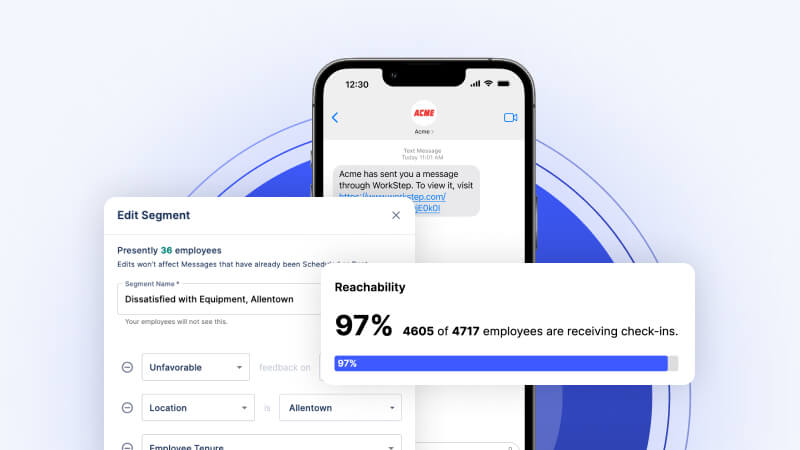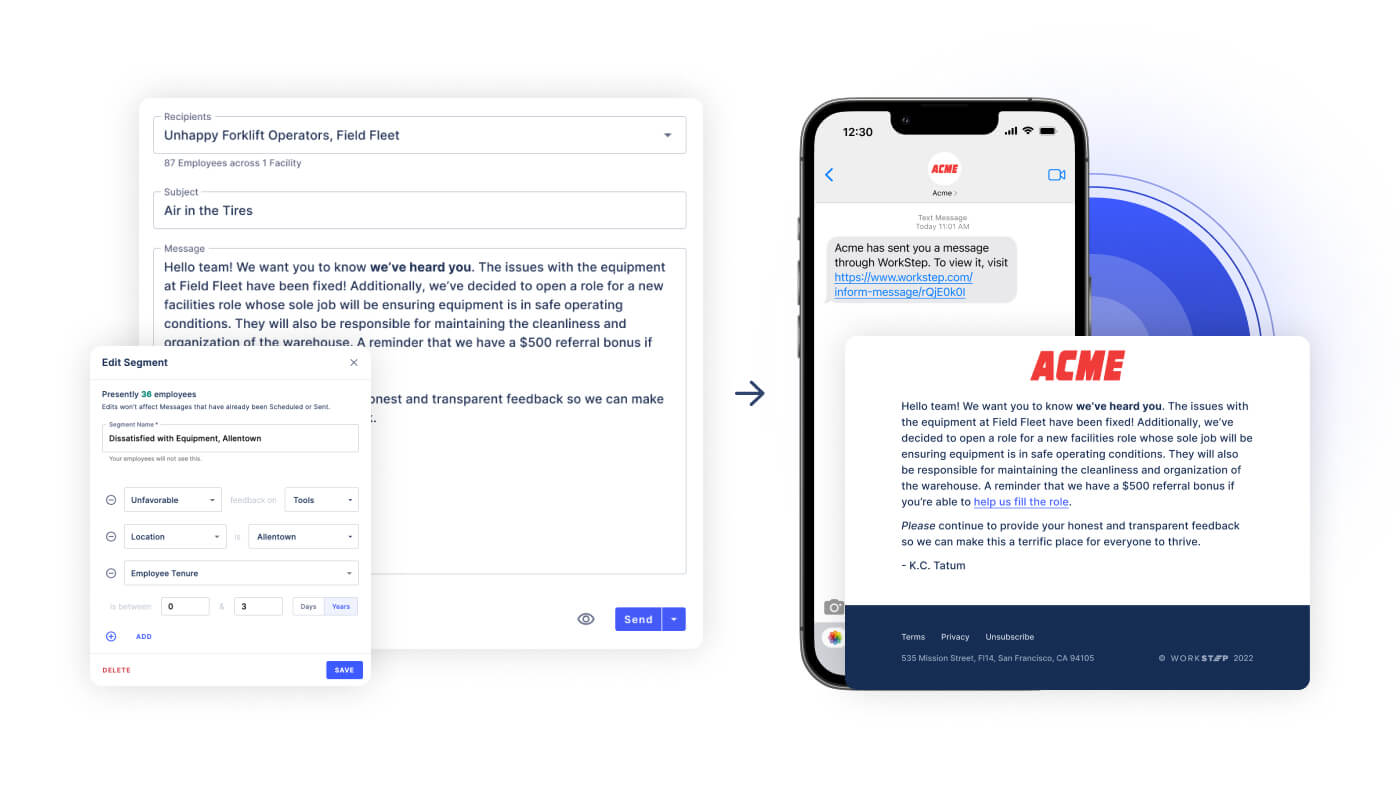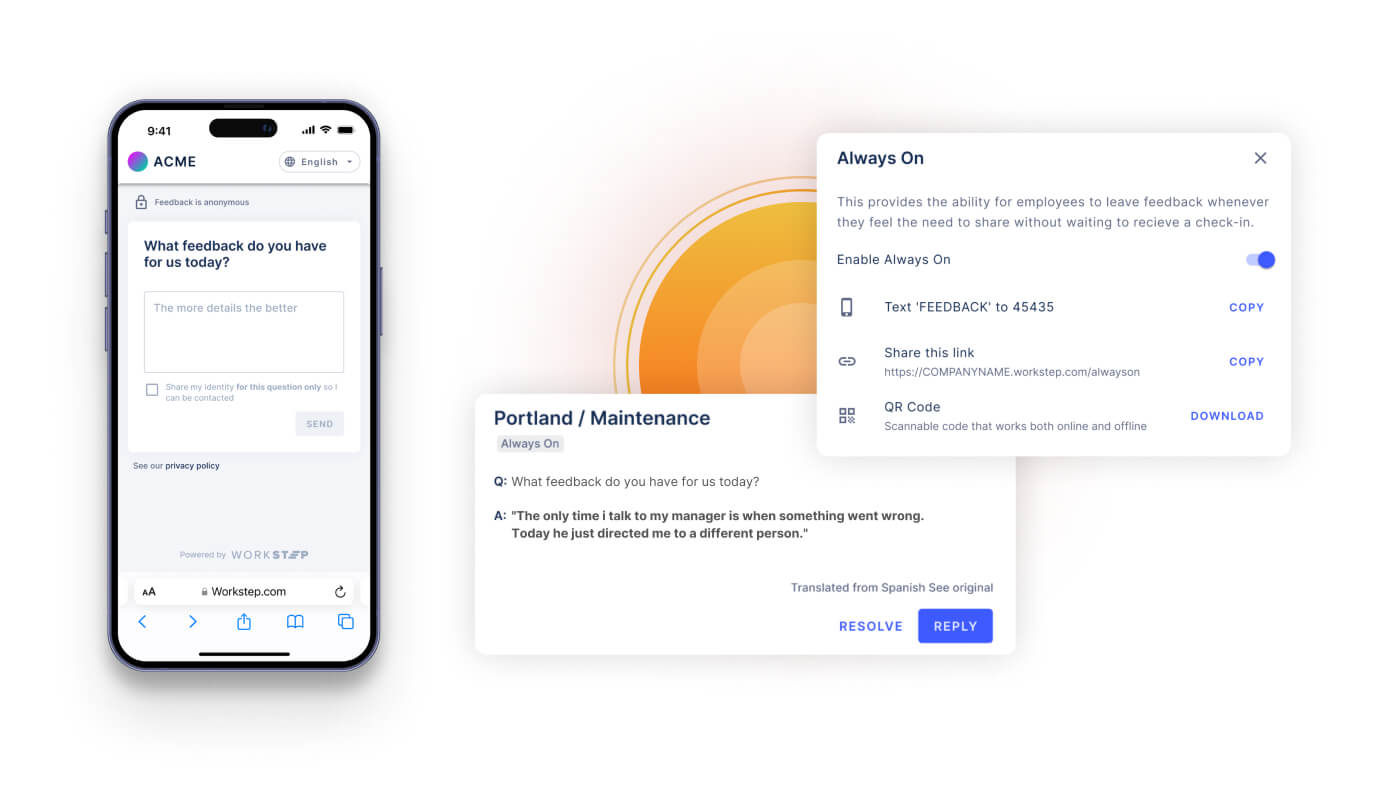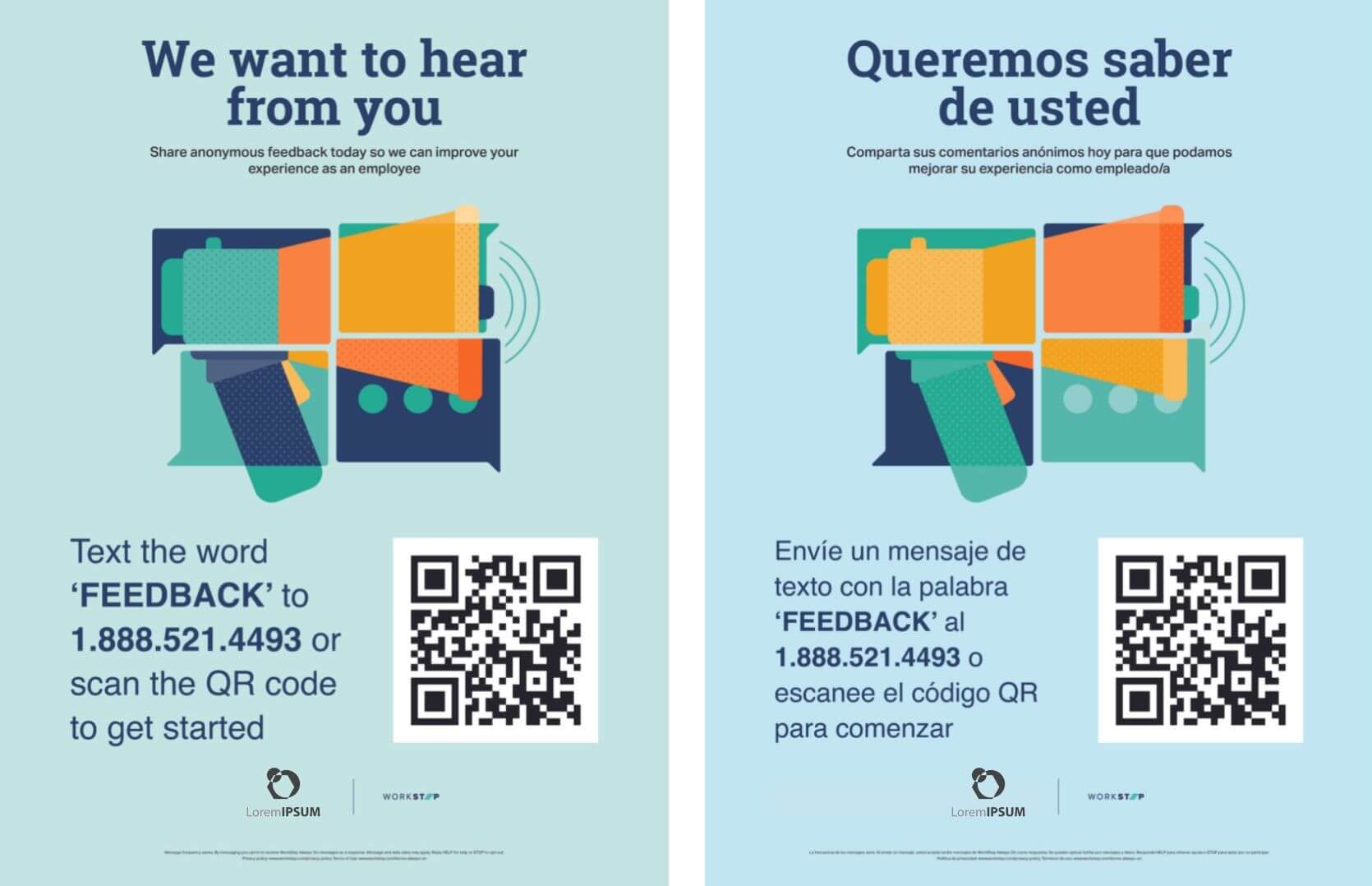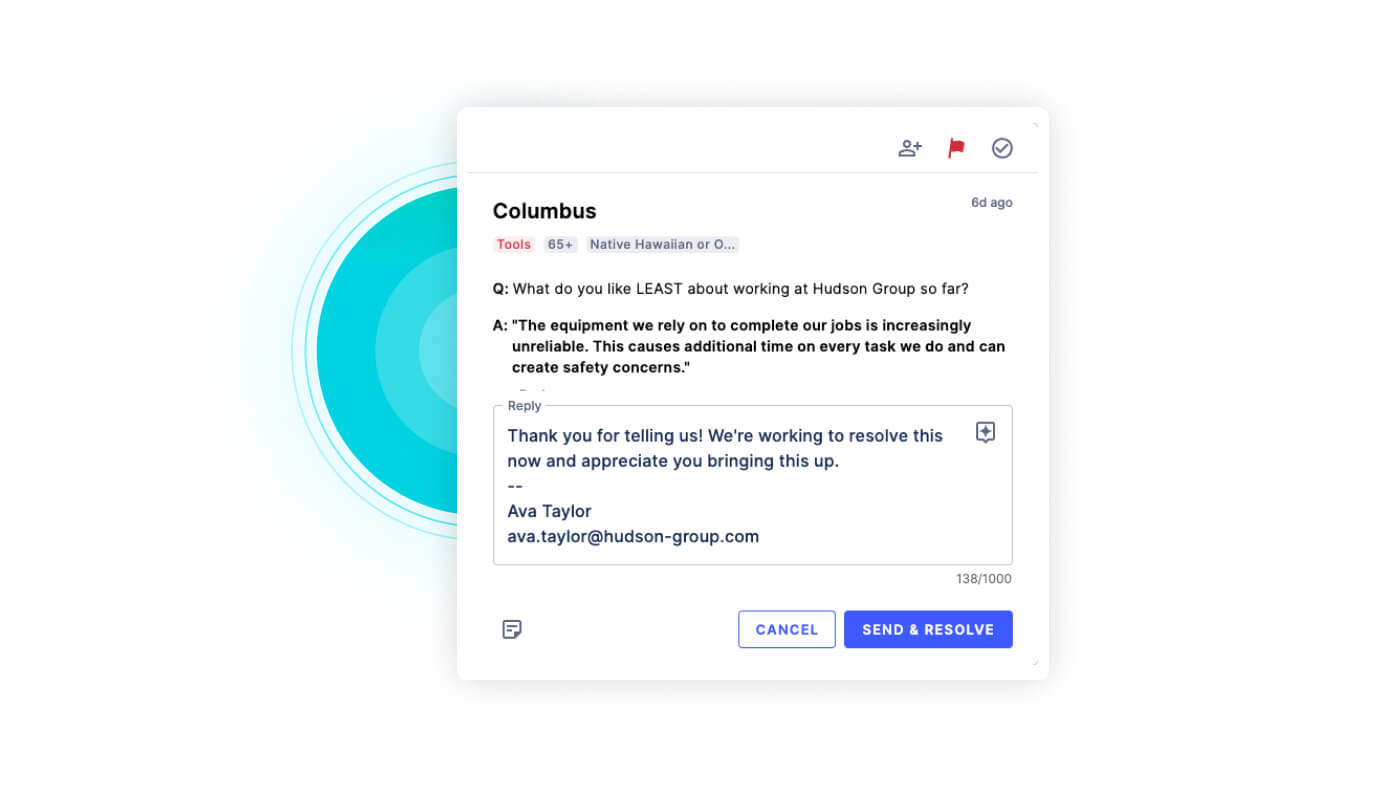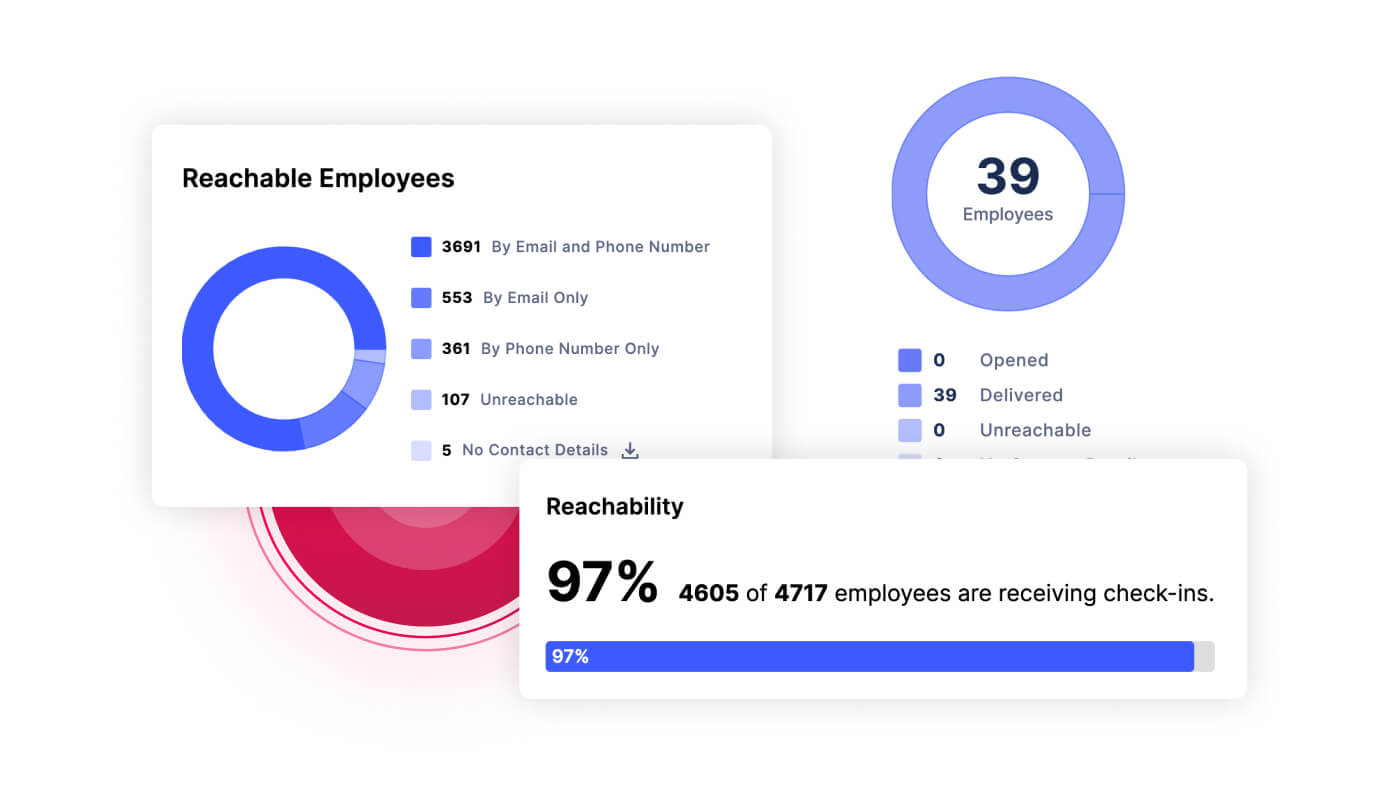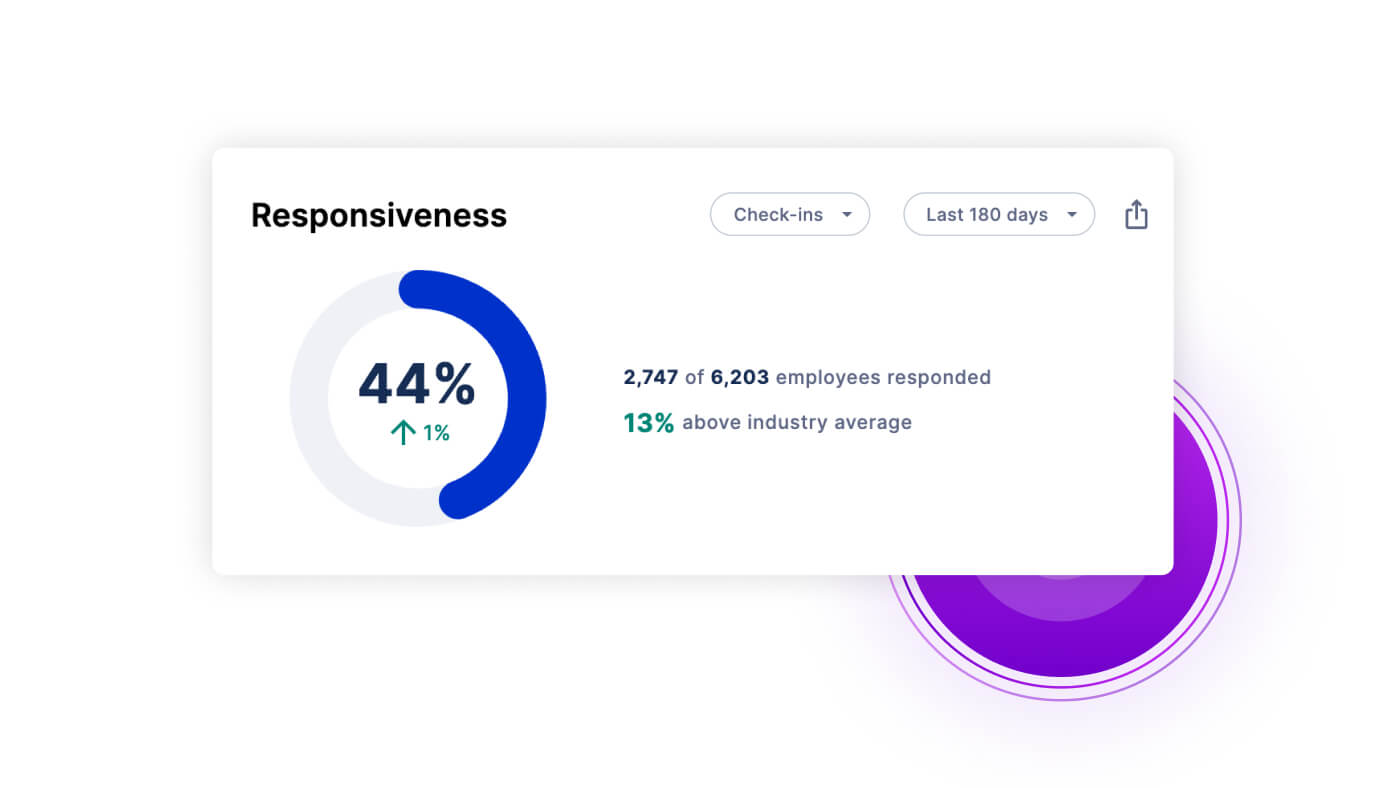Beyond the desk: WorkStep’s suite of frontline employee communications tools
February 7, 2024
Communicating with a frontline workforce comes with its own set of unique challenges. Unlike office-based employees, frontline workers are often in the field or on the floor, away from desks and traditional computer-based communication systems. This lack of instant access to digital internal communication tools can delay the dissemination of critical information, leading to operational inefficiencies and a sense of isolation among workers.
Compounding the problem is the physical distance between those who make operational decisions and the frontline workers who make them a reality. This disconnect can lead to a cascade of issues that impact the individual worker and resonate throughout the entire operational chain.
Addressing unique frontline communication needs is not just about bridging a technological gap; it’s about recognizing and adapting to the distinct rhythm and flow of the workers’ workday and actively collapsing the distance between the decision-makers and the doers.
When deploying a frontline communication strategy, organizations should implement tools and initiatives that effectively solve these unique challenges. Let’s explore some of these challenges in-depth and see how frontline employee communications tools can help improve the alignment between organizations and their workforce.
Internal communication tools for a dispersed, deskless workforce
The diverse and dispersed nature of frontline workplace environments makes engaging with workers across warehouse floors, on the road, and in stores a major challenge. Adding another layer of complexity is the varying schedules of the workforce. With frontline workers operating in shifts, often around the clock, reaching all employees simultaneously with important updates or feedback requests is nearly impossible. Traditional internal communication methods, such as emails, start-of-shift meetings, and break-room bulletin boards often fail to reach all employees in dynamic environments.
A 1:many segmented messaging tool subverts these common roadblocks by allowing site leaders to communicate with specific subsets of their workforce at will. It can allow leaders to close the loop by sending messages via text and/or email to defined groups within their organization based on role, location, tenure, and sentiment.
The importance of accessibility in frontline communications tools
Communicating with a frontline workforce requires solutions that are accessible, mobile-friendly, and tailored to meet workers where they are, both physically and technologically. Therefore, employers should solicit employee feedback using primary communication channels, like SMS and email. Supplement those digital channels with in-house kiosks to support employees without mobile device access.
Frontline communications tools should feature a continuous listening channel that allows employees to share anonymous feedback with their employers at any time, going beyond the limitations of traditional surveys. Having 24/7 access to a virtual suggestion box ensures quick and unfiltered communication, fosters a dynamic and responsive communication channel where frontline employees feel heard, and empowers frontline employees to contribute their insights.
Address employee feedback confidentially, in real-time
An ongoing struggle for HR and Operations teams is the inability to collect and address feedback confidentially and in real-time. Many organizations use traditional methods of collecting feedback which, when deployed for frontline employee communication, can lead to significant delays, safety concerns, and inefficiencies.
Adopting bi-directional communication tools can help maintain employee confidentiality while providing the ability for real-time, direct messaging in response to survey replies, something that’s essential in fast-paced work environments where leaders and employees are not physically together.
Occasionally, additional touch points are necessary to probe for more information, like which loading bay has a safety hazard or which pallet jack needs to be repaired before the next shift. Other times, this communication is necessary to close the loop with employees, so they know their voice is heard, a solution is in the works, and they won’t be in the dark about the outcomes. This not only helps in resolving issues more efficiently but also builds trust and transparency within the organization, as employees see their input being valued and acted upon.
Transparent and confidential communication between employees and managers fosters an environment of mutual trust, appreciation, and accountability. Knowing their survey responses are confidential encourages employees to provide open and honest feedback without fear of repercussion. Anonymity can empower employees who might otherwise hesitate to share feedback openly.
Measure the reachability and responsiveness of the workforce
According to the Society for Human Resource Management, about 70% of the U.S.’s working population has frontline jobs involving tasks such as waiting tables, folding clothes, or stocking shelves, which makes collecting accurate contact information and understanding which employees are receiving work-related communications difficult.
Reachability reports give visibility into the ability to connect with the workforce based on available contact information, bounce backs, and opt-outs. The Reachability percentage shows what percentage of the active workforce is reachable by either SMS or email.
Responsiveness reports represent the response rate for feedback and survey check-ins or the total number of respondents divided by the total number of recipients.
Reachability and Responsiveness reports provide valuable insights for organizations working with a frontline workforce, enabling them to optimize communication, allocate resources efficiently, respect employee preferences, and pursue continuous improvement in their engagement strategies.
These reports provide valuable insights for organizations working with a frontline workforce, enabling them to optimize communication, allocate resources efficiently, respect employee preferences, and pursue continuous improvement in their engagement strategies.
WorkStep: An internal communication tool for the frontline
A lack of appropriate communication and messaging tools can lead to low employee engagement and, in turn, increase turnover and absenteeism and decrease productivity. Alternatively, companies with high engagement levels have experienced a 41% reduction in absenteeism.
The evolving landscape of frontline workforce management underscores the critical need for tailored communication strategies, and WorkStep is at the forefront of this transformation. In environments where every second counts and traditional communication channels fall short, WorkStep’s innovative internal communication tools bridge the gap and make the flow of information seamless, timely, and relevant to every frontline worker.
WorkStep’s confidential direct messaging revolutionizes how frontline workers interact with management, fostering a culture of immediacy, responsiveness, and trust that everyone has the organization’s best interests in mind. Segmented messaging guarantees communication is thoughtfully crafted and addresses the specific needs of different workforce groups. This customization improves operational efficiency while significantly enhancing worker engagement and satisfaction.
Employee confidentiality and a robust feedback loop allow frontline workers to voice their concerns and ideas freely, promoting a transparent and inclusive work culture. This approach empowers employees and equips management with valuable insights to make data-driven decisions, leading to continuous improvement in processes and the workplace environment.
The importance of effective frontline employee communication cannot be overstated. WorkStep’s commitment to innovating and refining these communication tools to meet the ever-changing demands of the workforce puts us at the cutting edge of this field. By prioritizing frontline workers’ unique communication needs, WorkStep is not just enhancing the present; it’s shaping the future of workforce management.
Tune into your frontline with WorkStep
With the frontline employee engagement platform that delivers the real-time insights you need to take action, retain your workforce, and drive your business forward.
Tori Cook, Director of Demand Generation | tori@workstep.com
Tori Cook is the Director of Demand Generation at WorkStep. With a proven track record of generating impactful results, Tori is passionate about sharing her expertise in operations, marketing, and workplace culture with the WorkStep blog readers.
